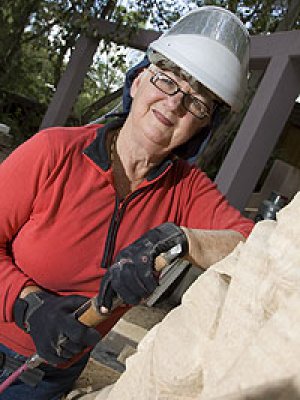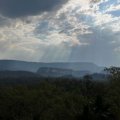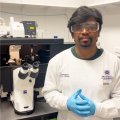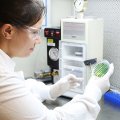
UQ sculptor Dr Rhyl Hinwood is at it again, putting the final touches to her most recent university sculpture for St Leo's College.
The very large "Tree of Life" artwork has occupied Dr Hinwood's time for the past three months and will be placed in the courtyard at the residential college in early 2009.
The sculpture is traditionally symbolic of the life process of growth, development and regeneration and is an appropriate inspiration for students at this formative stage of their lives.
The tree is based on the non-deciduous Moreton Bay fig Ficus macrophylla - a symbol of everlasting life, reflecting the religious experience at St Leo's College.
Dr Hinwood said the fig's buttressed roots symbolised the underworld and from them, the tree grows into the world of time.
"Rector Brother Vince Skelly has a goal to make St Leo's a place of beauty where the imagination can be inspired," she said.
"The trunk symbolises earth and the world axis, the link between heaven and hell and the attainment of knowledge.
"The branches symbolise the heavens with the sun, the moon, and stars and the different edible fruits are native to tropical and sub tropical rainforests such as the Queensland nut, the Bunya Pine, Davidson plum and the tamarind - just as the student residents of the college have come from homes widespread in the state and neighbouring countries.
"The carved vine encircling the trunk of the tree creates a spiral - a sequence of cycles which characterise the revealed world and rise to attainment of a higher plane."
The artist chose to depict the native vine Paristolochia praevenosa because she learned the vine was an important breeding place for the endangered Richmond Birdwing Butterfly.
"In order to preserve this species of butterfly, we are encouraged to grow this vine, which is now no longer present in the wild," Dr Hinwood said.
This is Dr Hinwood's third artwork for St Leo's College with a former piece including the entry marker of a carved Helidon freestone mounted on a Harcourt granite base, the same granite used in the foundations of UQ's Great Court.
"Each new project has its own challenges and leads me into research that is relevant to the site and the commission brief," she said.
Dr Hinwood was commissioned as UQ sculptor in 1976 and since then, has created more than 300 artworks for The University of Queensland.
In 2001, Dr Hinwood was awarded the Honorary Degree of Doctor of Philosophy for her outstanding contribution to The University of Queensland and to the visual arts in Queensland, and in 2006 was appointed a Member in the General Division of the Order of Australia.
Her work is included on the Registers of Queensland Heritage and the National Estate.
Media: Eliza Plant at UQ Communications (07 3365 2619)
.jpg)



